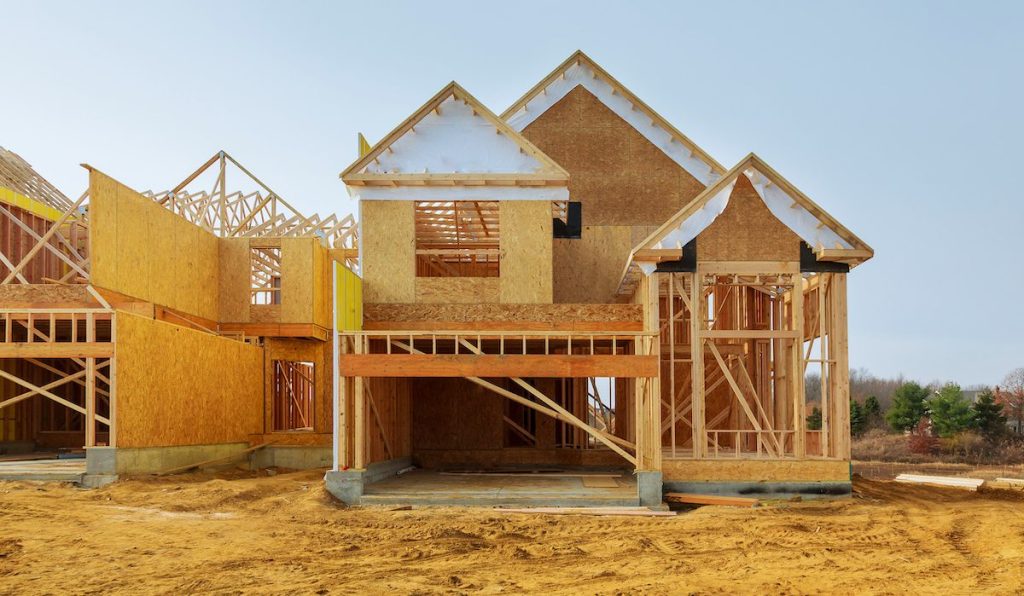Overall housing starts in January totaled 1.58 million units, a decline of 6% from December, according to the latest statistics from the U.S. Census Bureau. But there’s reason for optimism from homebuilders – a huge spike in building permits.
“Despite a modest month-over-over decline, single-family housing starts are up 17.5% from one year ago,” said Odeta Kushi, deputy chief economist at title insurance firm First American. “Single-family permits, a leading indicator of future starts, are up nearly 30% from one year ago. It’s still not enough to significantly narrow the gap between supply and demand, but it’s a step in the right direction.”
A total of 1.881 million residential building permits were issued last month to homebuilders, roughly 1.2% above December’s tally but more than 22% greater than were issued a year ago.
Interestingly, the overall decrease in housing starts last month was driven by single-family starts, which decreased by 12.2% from the prior month, while multi-family starts increased by 17.1% from last month. A seasonal dip was to be expected, experts said, but the widespread distribution of a COVID-19 vaccine should give the economy – and the housing industry – a shot in the arm in 2021.
Doug Duncan, Fannie Mae’s senior vice president and chief economist, said the vaccine combined with President Joseph Biden’s $1.9 trillion fiscal stimulus will drive consumer interest in locking-in historically low mortgage rates, thus driving the amount of home sales upward.
Making housing more affordable by bridging the affordable supply gap
In the last few years, the number of existing single-family homes for sale has decreased. But home prices have increased. To make homeownership a possibility for everyone, there needs to be a higher supply of affordable homes.
Presented by: Fannie Mae
“We assume that the proposed fiscal stimulus of around $1.9 trillion will be passed in mid-March, and that growth will accelerate sharply beginning in the second quarter,” Duncan said. “If 2020 was the year of the virus, then 2021 will more than likely be the year of the vaccine. Whether the vaccines are effective, including with the new virus strains, and how broadly and timely they can be distributed remain key questions.”
Economists are wary, Duncan said, of a potential boom-or-bust scenario for the housing industry in the new year: the combination of rising interest rates from record-low levels, a high national debt, and the risk of rising inflation.
“Very strong growth in the second half of 2021 could push inflation, and thereby rates, up significantly in 2022, thus invoking a Fed response of tightening and a significant deceleration later in 2022,” Duncan said. “This is not our base case scenario, but we see it as a significant risk moving forward.”
Added John Pataky, TIAA Bank executive vice president: “With rates creeping up and homebuilding still partially restricted by the pandemic, the housing market’s next phase of growth may be much more of a grind.”
Privately-owned housing starts in January hit an adjusted rate of 1.336 million, down 2.3% from December but up 2.4% from January 2020.
Single-family authorizations in January were at 1.269 million, up 3.8% from December.
January housing starts increased in the Northeast (+2.3%), but decreased in the Midwest (-12.3%), the West (-11.4%), and the South (-2.5%).
Where homebuilders go from here is of great interest to industry experts: Construction rates are expected to climb in the opening quarter of 2021 and possibly into the summer thanks to high-lumber prices and low land inventory, but the demand for homes is expected to remain high thanks to low interest rates and the hope of President Joseph Biden’s $15,000 first-time homebuyer tax credit.
“Lumber now costs more than double what it did this time last year – a fact that that has reportedly caused some builders to stop some projects mid-way,” said Matthew Speakman, Zillow economist. “Land and labor shortages also continue to hinder the ability to take on new projects.”
Still, Speakman noted, homebuilders’ earned some benefit of the doubt with the way they handled hurdles in 2020.
“Home construction was a source of strength in the U.S. economy in 2020, as builders strove to keep up with robust demand for housing and put up homes at the strongest pace in a decade and a half,” he said.






